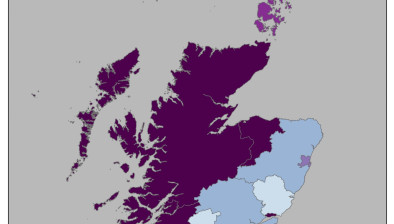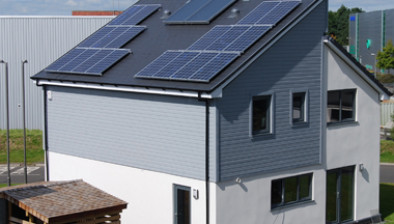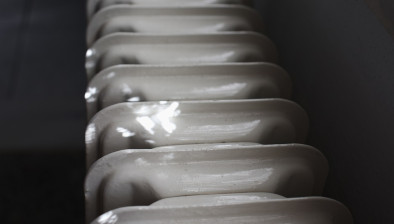Call to rid Scotland of its 1.5 million cold homes by 2025

Political parties have been urged to commit to ridding Scotland of the “scourge” of cold homes by 2025 after new data revealed that there are up to 1.5 million cold homes in the country.
The Existing Homes Alliance, whose members include WWF Scotland, Changeworks and the National Insulation Association, made the call following the publication of the newly compiled data which showed that an estimated 1,482,000 households in Scotland currently live in a home that is “unhealthily cold”, i.e. one that is rated below a C EPC (Energy Performance Certificate) standard.
The National Institute of Health and Care Excellence (NICE) has recommended that, as a minimum, properties should be raised to an EPC band C and ideally to a band B to help reduce the risk of death and ill health associated with living in a cold home. This is 62 per cent of households in Scotland.
The figures show that the households in the lowest energy efficiency bands are more likely to be living in fuel poverty.
According to the data there are tens of thousands of cold homes in every single parliamentary constituency. There are seven constituencies in Scotland where more than 75 per cent of households are estimated to be living in a cold home: Na h-Eileanan an Iar; Skye, Lochaber and Badenoch; Caithness, Sutherland and Ross; Shetland Islands; Orkney Islands; Argyll and Bute; Banffshire and Buchan Coast.
There are only three constituencies in Scotland where more than half of households are living in a home of an “acceptable” energy efficiency rating (i.e. at least a C EPC standard): Glasgow Shettleston; Edinburgh Northern and Leith; Glasgow Anniesland.
Commenting on the new figures, Alan Ferguson, chair of the Existing Homes Alliance, said: “These figures show that if the next Scottish Government set an objective to bring all homes in Scotland to at least a ‘C’ energy performance standard by 2025, they could end the scourge of cold homes currently affecting thousands of households in every single parliamentary constituency across Scotland.
“Not only did more than 50 business and civil society organisations welcome the cross-party commitment to making improved energy efficiency for Scotland’s homes a National Infrastructure Priority, but the National Institute of Health and Care Excellence suggested a ‘C’ standard is the minimum energy efficiency level to avoid the risk of death and ill-health associated with cold homes.”
Dr Sam Gardner, head of policy at WWF Scotland, said: “Heating Scotland’s buildings accounts for over half of our climate change emissions. Ensuring every home reaches a C Energy performance standard by 2025 is the minimum level of ambition required to allow our climate change targets to be met. A political commitment that no-one should live in a hard-to-heat, draughty home would be good for millions of households, and would drastically reduce emissions too.”
Wilson Shaw, chair of the National Insulation Association in Scotland, added: “A commitment from the next Scottish Government to ensure all homes in Scotland reach a minimum energy efficiency standard could create up to 9,000 jobs a year. Today’s figures show that such a commitment would benefit thousands of households across every single Scottish parliamentary constituency. Few other capital investments could make such a difference, and such a commitment would give the energy efficiency industry the confidence to invest for the longer term.”
Responding to figures, Mary Taylor, chief executive of the Scottish Federation of Housing Associations (SFHA), said: “These figures illustrate the serious challenge of tackling fuel poverty in Scotland and highlight the need for greater investment in the energy efficiency of Scotland’s homes.
“The SFHA is calling for Scotland’s next government to set a target that all homes should have a minimum category C energy efficiency rating by 2025. Setting this standard and, crucially, providing the necessary funding to support it, would reduce fuel poverty and improve the health and wellbeing of people currently living in cold, damp homes. The investment in insulation and other measures would also create jobs in communities across Scotland.
“While research shows that housing associations have the most energy efficient homes in Scotland, their tenants are as likely to be in fuel poverty as the average Scottish household, as housing association tenants are, on average, on lower incomes. It is therefore vital that social landlords receive support to invest in the energy efficiency of their homes, particularly hard to treat homes, in order to protect their tenants from the impacts of rising fuel prices and the effects of fuel poverty.”
Cold Homes in each of Scotland’s Parliamentary Constituencies

















